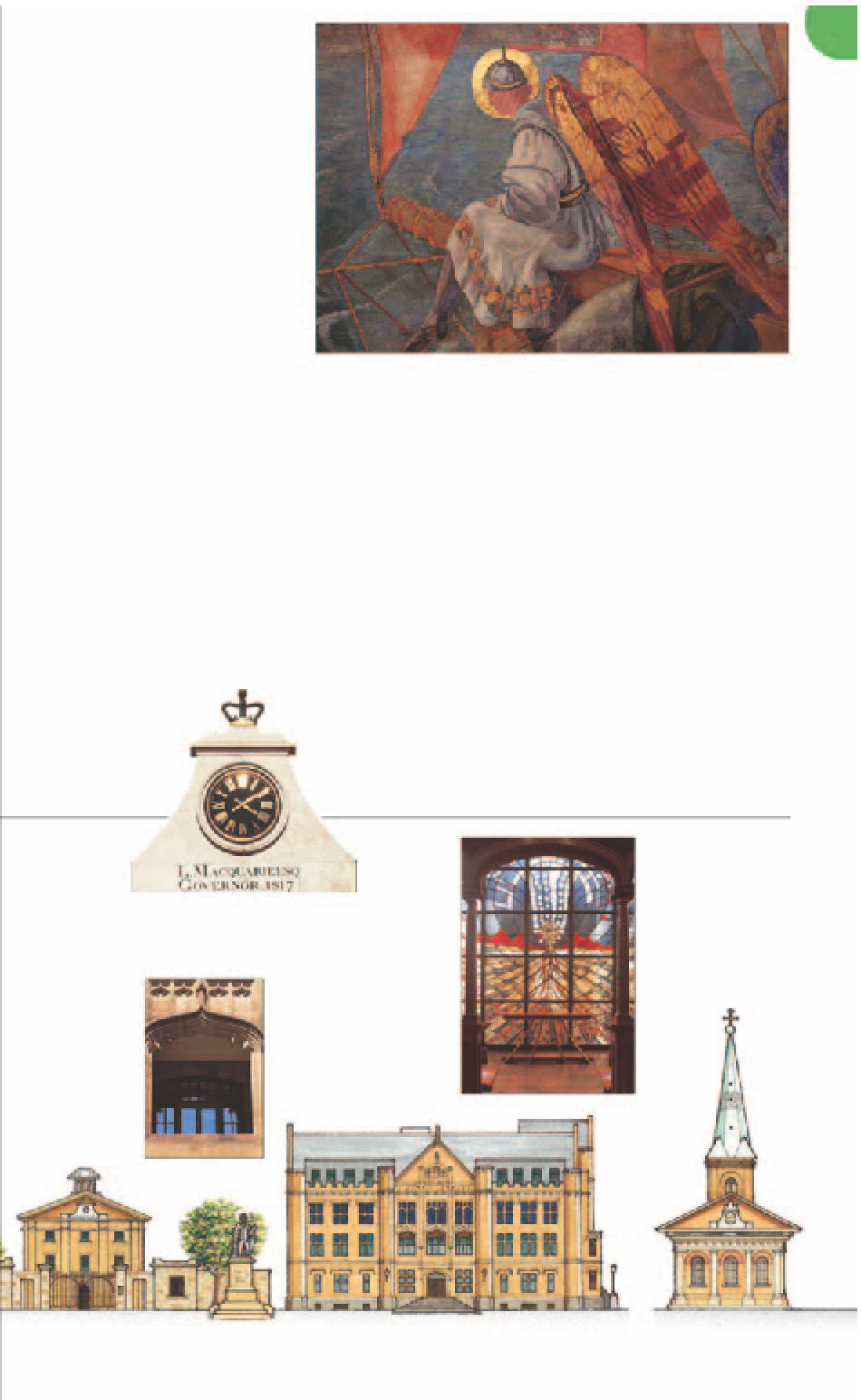Travel Reference
In-Depth Information
by convict labour and designed
to house 600 convicts who had
previously been forced to find
their own lodgings after their
day's work. Subsequently, the
building housed Irish orphans
and then single female immig-
rants, before becoming courts
and legal offices. Refurbished
in 1990, it reopened as a
museum with exhibits covering
the the site and its occupants
over the years.
The displays include a room
reconstructed as convict quar-
ters of the 1820s, as well as
pictures, models and artifacts
relating to this period of
Australian history. Many of
the objects recovered during
archaeological digs at the site
and now on display had been
dragged away by rats to their
nests; the scavenging rodents
are acknowledged as valuable
agents of preservation.
The Greenway Gallery on the
first floor holds temporary
exhibitions on history, ideas
and culture. From the Barracks
Café, which incorporates the
original confinement cell area,
the visitor can enjoy
refreshment, gazing
out over the now
serene courtyard,
once the
scene of
brutal convict
floggings.
Detail from the Children's Chapel mural in the St James' Church crypt
St James'
Church
r
173 King St.
Map
1 B5.
Tel
8227 1300.
yet elegant church. Consecrated
in 1824 by Samuel Marsden,
the infamous “flogging parson”,
it is Sydney's oldest church.
Many additions have been
carried out, including designs
by John Verge in which the
pulpit faced towards high-rent
pews, while convicts and the
military sat behind the preacher
where the service would have
been inaudible. A Children's
Chapel was added in 1930.
Prominent members of early
19th-century society, many of
whom died violently, are com-
memorated in marble tablets.
These tell the full and bloody
stories of luckless explorers
and shipwreck victims, among
other untimely demises.
8am-
5pm Mon-Fri, 8am-4pm Sat, 7:30am-
4pm Sun.
Free concerts
Mar-Dec:
Wed 1:15pm.
www
.sjks.org.au
St James, Martin Place.
#
This fine Georgian building,
constructed with convict-
made bricks, was designed as
a courthouse in 1819. The
architect, Francis Greenway,
was forced to convert it into a
church in 1820, when plans
to build a grand cathedral on
George Street were abandoned.
Greenway unhappy about
the change, designed a simple
The stained-glass
windows
in the
Chapel of the Holy
Spirit of St James'
Church are mostly
20th century.
This clock,
dating from 1817
and one of Sydney's oldest, is on
the Hyde Park Barracks façade.
The Land Titles Office
,
a WL Vernon building
from 1908, has a
Classical form with
some fine Tudor
Gothic detailing.
Georgian
sandstone
façade
Copper
spire atop
a square
brick tower
Statue of Prince
Albert
HYDE PARK BARRACKS
(1817-19)
LAND TITLES OFFICE
(1908-13)
ST JAMES'
(1820)











































